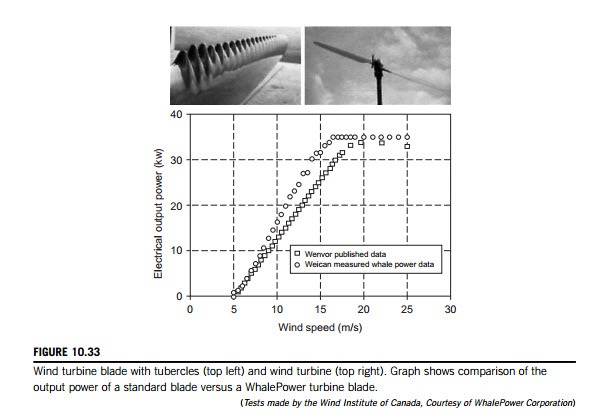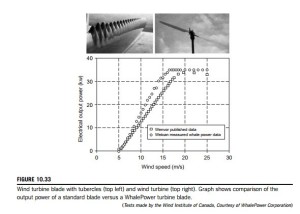Environmental matters
On what may be classed as aesthetic considerations and environmental objections are the following topics, arguably in decreasing order of importance: (i) visual intrusion, (ii) acoustic emissions, (iii) impact on local ecology, (iv) land usage, and (v) effects on radio, radar, and television reception. Much has been written about all these topics, also numerous websites cover each of them so, for brevity, only a brief recapitulation of some of the main issues regarding the first two are afforded any space in this chapter.
Visual intrusion
The matter of public acceptance (in the United Kingdom especially and several other countries) is important and clearly depends upon where the turbines are located and their size. The early investigations of acceptability indicated that the sight of just a few turbines, perhaps a mile or so distant, produced only a few isolated complaints and even appeared to generate some favorable interest from the public. However, any suggestion of locating wind turbines on some nearby scenic hillside produced some very strong opposition, comments in the press, and the formation of groups to oppose the proposals. The opposition set up by a few vociferous landowners and members of the public in the 1990s retarded the installation of wind farms for several years in many parts of the United Kingdom. However, wind turbines in larger numbers located in relatively remote upland areas and not occupying particularly scenic ground have been installed. Nowadays, medium- and large-size wind turbines in small numbers (i.e., 20-30) are regarded as beneficial to the community, providing they are not too close. The move to locate wind turbines offshore may have started as a result of this opposition but, as it turned out, there were some hidden benefits. Perhaps they may eventually become tourist attractions in the area. The graceful, almost hypnotic turning of the slender blades of the larger turbines, seemingly in slow motion, has generally led to a more positive aesthetic reaction, in most surveys. Other factors can importantly sway public acceptance of wind turbines. The first factor is the perceived benefit to the community with part or total ownership, giving lower power costs and possibly even preferential availability of power. The second factor comes from the amount of careful planning and cooperation between the installers and the leaders of the community long before any work on installation commences. It is a strange fact that the old- fashioned, disused windmills, now local landmarks, that abound in many parts of Europe (e.g., see Figure 10.2), are now widely accepted.
Acoustic emissions
Wind turbines undoubtedly generate some noise but, with the improvements in design in recent years, the level of noise emitted by them has dropped remarkably.
Aerodynamic broadband noise is typically the largest contributor to wind turbine noise. The main efforts to reduce this noise have included the use of lower blade tip speeds, lower blade angles of attack, upwind turbine configuration, variable speed operation, and specially modified blade trailing edges and tip shapes. For the new, very large (i.e., 1-5 MW size) wind turbines, the rotor tip speed on land is limited (in the United States the limit is 70 m/s). However, large variable speed wind turbines often rotate at lower tip speeds in low speed winds. As wind speed increases, the rotor speed is allowed to increase until the limit is reached. This mode of operation results in much quieter working at low wind speeds than a comparable constant speed wind turbine.
The study of noise emitted by wind turbines is a large and complex subject. No coverage of the basic theory is given in this chapter. Numerous publications on acoustics are available and one particularly recommended as it covers the study of fundamentals to some extent is the white paper by Rogers and Manwell (2004), prepared by NREL. A wide ranging, deeper approach to turbine noise is given in the NASA/DOE publication “Wind Turbine Acoustics,” by Hubbard and Shepherd (1990).
A particular problem occurs in connection with small wind turbines. These turbines are sold in large numbers in areas remote from electric utilities and are often installed close to people’s homes, often too close. There is an urgent need for reliable data on the levels of noise generated so that homeowners and communities can then reliably anticipate the noise levels from wind turbines prior to installation. The NREL have performed acoustic tests (Migliore, van Dam, & Huskey, 2004) on eight small wind turbines with power ratings from 400 W to 100 kW to develop a database of acoustic power output of new and existing turbines and to set targets for low noise rotors. Test results will be documented as NREL reports, technical papers, seminars, colloquia, and on the Internet. In comparing the results, Migliore et al. reported that, following improvements to the blad- ing, the noise from the Bergey Excel (see Figure 10.4(b)) was reduced to the point that the turbine noise could not be separated from the background noise. As a result, any further testing will need to be done in a much quieter location.

